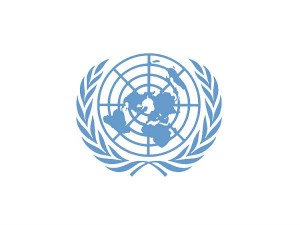UN sending chemical weapons kits to Syria monitors

UN peacekeeping chief Herve Ladsous briefed the UN Security Council on efforts to bolster the safety of the UN force, which monitors a ceasefire zone between Syria and Israel, after five troops were injured in attacks.
“We have taken measures to enhance security,” he told reporters after the meeting.
“For those personnel who are not equipped on a national basis we are sending them some kits to protect them from chemical attack, if that were to happen.”
Extra armored cars have also been sent from other missions to the UN Disengagement Observer Force (UNDOF), which has been monitoring a ceasefire between Israel and Syria since 1974.
There are about 1,000 unarmed troops from Austria, Croatia, India, Japan and Philippines in UNDOF. The Indian troops, at least, are known not to have chemical weapon protection.
Five Austrians were wounded, two seriously, when a convoy taking US troops from the Golan Heights to Damascus airport came under attack earlier this month. There have been a number of incidents in the ceasefire zone this year.
“There have been increasing difficulties fulfilling its mandate,” Ladsous said. “The multiplication of incidents is really a concern.”
The United States said earlier this month that it had intelligence showing Syria was considering using its chemical weapons. US President Barack Obama led international warnings to President Bashar al-Assad over the arsenal.
Ladsous also confirmed that the United Nations is drawing up contingency plans to send a possible international force to Syria if the government collapses, but the UN peacekeeping chief gave no details.
“It is contingency planning based on a number of possible scenarios. But the work is going on,” he said.
Syria’s UN ambassador Bashar Jaafari said, meanwhile, that Damascus is “genuinely worried” that some countries might equip extremist groups with chemical weapons and then claim they were used by the government.
Jaafari also accused the United States of backing “terrorist” groups in Syria in a letter to UN leader Ban Ki-moon and the UN Security Council which was released Monday.
The letter reaffirmed the Assad government’s denial that it would use chemical weapons.
“It is defending its people from terrorists backed by well-known states, at the forefront of which is the United States of America,” Jaafari said.
“We are genuinely worried that certain states that support terrorism and terrorists could provide the armed terrorist groups with chemical weapons, and then claim they had been used by the Syrian Government,” he wrote.
The US says it only provides non-lethal equipment to rebels fighting Assad and humanitarian aid to the country as a whole.
The Syrian government accuses Saudi Arabia, Qatar, Turkey, the United States and other Western governments of arming the rebels.